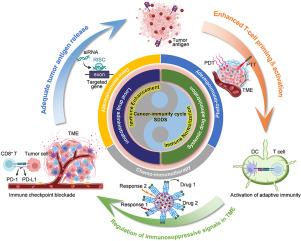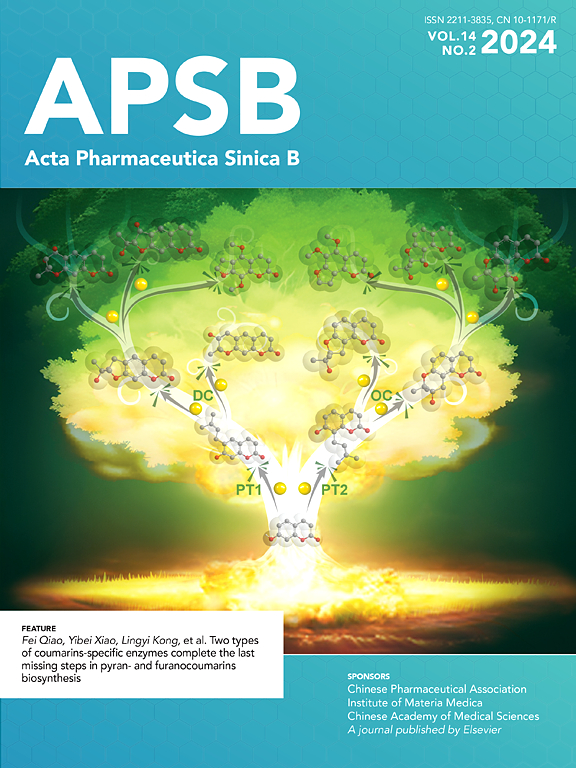Engineering strategies of sequential drug delivery systems for combination tumor immunotherapy
IF 14.6
1区 医学
Q1 PHARMACOLOGY & PHARMACY
引用次数: 0
Abstract
Over the past few decades, tumor immunotherapy has revolutionized the landscape of cancer clinical treatment. There is a flourishing development of combination strategies to improve the anti-tumor efficacy of mono-immunotherapy. However, instead of a straightforward combination of multiple therapeutics, it is more preferable to pursue a synergistic effect by designing rational combinations as well as administration strategies, which are based on a comprehensive understanding of the physiological and pathological features. In this case, the timing and spatial distribution of the combination drugs become essential factors in achieving improved therapeutic outcomes. Therefore, the concept of Sequential Drug Delivery System (SDDS) is proposed to define the spatiotemporally programmed drug delivery/release through triggers of internal conditions and/or external interventions, thus complying with the dynamic disease evolution and the human immunity. This review summarizes the recent advancements in biomaterial-based SDDSs used for spatiotemporally-tuned combination tumor immunotherapy. Furthermore, the rationales behind various engineering strategies are discussed. Finally, an overview of potential synergistic mechanisms as well as their prospects for combination immunotherapy is presented.

肿瘤免疫联合治疗序贯给药系统的工程策略
在过去的几十年里,肿瘤免疫治疗已经彻底改变了癌症临床治疗的格局。为了提高单免疫治疗的抗肿瘤效果,联合治疗正在蓬勃发展。然而,与其直接联合多种治疗方法,更可取的是在全面了解生理和病理特征的基础上,通过设计合理的组合和给药策略来追求协同效应。在这种情况下,联合用药的时间和空间分布成为改善治疗效果的关键因素。因此,我们提出序贯药物传递系统(Sequential Drug Delivery System, SDDS)的概念,定义通过内部条件和/或外部干预触发药物的时空程序化传递/释放,从而符合疾病的动态演变和人体免疫。本文综述了基于生物材料的sdds用于时空调谐联合肿瘤免疫治疗的最新进展。此外,还讨论了各种工程策略背后的原理。最后,概述了潜在的协同机制及其联合免疫治疗的前景。
本文章由计算机程序翻译,如有差异,请以英文原文为准。
求助全文
约1分钟内获得全文
求助全文
来源期刊

Acta Pharmaceutica Sinica. B
Pharmacology, Toxicology and Pharmaceutics-General Pharmacology, Toxicology and Pharmaceutics
CiteScore
22.40
自引率
5.50%
发文量
1051
审稿时长
19 weeks
期刊介绍:
The Journal of the Institute of Materia Medica, Chinese Academy of Medical Sciences, and the Chinese Pharmaceutical Association oversees the peer review process for Acta Pharmaceutica Sinica. B (APSB).
Published monthly in English, APSB is dedicated to disseminating significant original research articles, rapid communications, and high-quality reviews that highlight recent advances across various pharmaceutical sciences domains. These encompass pharmacology, pharmaceutics, medicinal chemistry, natural products, pharmacognosy, pharmaceutical analysis, and pharmacokinetics.
A part of the Acta Pharmaceutica Sinica series, established in 1953 and indexed in prominent databases like Chemical Abstracts, Index Medicus, SciFinder Scholar, Biological Abstracts, International Pharmaceutical Abstracts, Cambridge Scientific Abstracts, and Current Bibliography on Science and Technology, APSB is sponsored by the Institute of Materia Medica, Chinese Academy of Medical Sciences, and the Chinese Pharmaceutical Association. Its production and hosting are facilitated by Elsevier B.V. This collaborative effort ensures APSB's commitment to delivering valuable contributions to the pharmaceutical sciences community.
 求助内容:
求助内容: 应助结果提醒方式:
应助结果提醒方式:


